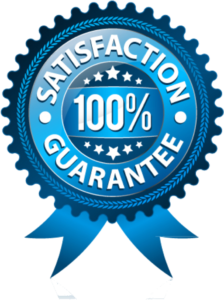10.1 In Table 10-3, suppose shipping cost from source C to point 2 was 8, which below would be true? (a) There
10.1
In Table 10-3, suppose shipping
cost from source C to point 2 was 8, which below would be true?
(a) There
would be multiple optimal solutions.
(b) The
minimum possible total cost would decrease.
(c) The
minimum possible total cost would increase.
(d) Another
dummy column would be needed.
(e) none
of the above
10.2
Both transportation and
assignment problems are members of a category of LP techniques called ____.
(a)
transasignment problems
(b)
Hungarian problems
(c)
source-destination problems
(d)
supply and demand problems
(e)
Network flow problems
10.3
Transportation models can be
used for which of the following decisions?
(a) facility
location
(b) production
mix
(c) media
selection
(d) portfolio
selection
(e) employee
shift scheduling
Table 10-6
Initial
tableno allocations yet
To==>
1
2
3
Supply
From
A
| 6
| 4
| 5
200
B
| 8
| 6
| 7
300
C
| 5
| 5
| 6
300
Demand
400
200
100
Optimal
Solution by the Modi Method
To==>
1
2
3
Dummy
Supply
From
A
| 6
100
| 4
| 5
100
| 0
200
B
| 8
| 6
200
| 7
| 0
100
300
C
| 5
300
| 5
| 6
| 0
300
Demand
400
200
100
100
10.4
In Table 10-6, which presents a
MODI solution for a transportation problem, which statement is true?
(a) There
is no feasible solution to the problem.
(b) The
total cost represented by the solution is $3,700.
(c) One
hundred units of demand are not met.
(d) The
original problem was unbalanced.
(e) The
cheapest route has the highest shipment amount.
10.5
According to Table 10-6, which
presents a MODI solution for a transportation problem, if that solution is
used, which of the following is true?
(a) Source
A will ship 200 units to destination 1.
(b) Source
B will ship only 200 units.
(c) Source
C will ship only 200 units.
(d) Source
A will ship 100 units to destination 2.
(e) none
of the above
10.6
According to Table 10-6, which
presents a MODI solution for a transportation problem, if that solution is
used, which of the following is true?
(a) Total
cost of shipping from A is $1,000.
(b) Total
cost of shipping from B is $1,200.
(c) Total
cost of shipping from C is $300.
(d) Total
cost of shipping from B is $1,300.
(e) none
of the above
Table 10-7
Initial
tableno allocations yet
To==>
1
2
3
Supply
From
A
| 4
| 6
| 4
100
B
| 6
| 5
| 5
200
C
| 5
| 7
| 6
200
Demand
200
200
100
Optimal
solution by the MODI method
To==>
1
2
3
Supply
From
A
| 4
| 6
| 4
100
100
B
| 6
| 5
200
| 5
200
C
| 5
200
| 7
| 6
200
Demand
200
200
100
10.7
According to Table 10-7, which
presents a MODI solution for a transportation problem, if that solution is
used, which of the following is true?
(a) 100
units will be shipped from source A to destination 1.
(b) The
total cost is $500.
(c) The
final solution is degenerate.
(d) The
original problem was unbalanced.
(e) none
of the above
}
10.8
According to Table 10-7, which
presents a MODI solution for a transportation problem, if that solution is
used, which of the following is true?
(a) The
total shipping cost is $2,400.
(b) There
is excess supply.
(c) There
is excess demand.
(d) The
total cost of shipping is $500.
(e) none
of the above
}
10.9
The two most common objectives
for the assignment problem are the minimization of _____________.
(a) uncertainty
or inexperience
(b) total
costs or inexperience
(c) total
costs or total time
(d) total
time or inexperience
(e) total
costs or uncertainty
10.10
Which of the following
statements is accurate with regard to assignment problems?
(a) A
project can be assigned to more than one person.
(b) Only
one person can be assigned to each project.
(c) A
person can be assigned to more than one project.
(d) (a)
and (c)
(e) none
of the above
}
10.11
Which of the following
statements is true comparing the transportation and assignment algorithms to
the simplex algorithm?
(a) similar
computational effort, faster, and similar computer memory usage
(b) less
computational effort, similar speed, and less computer memory usage
(c) less
computational effort, faster, and similar computer memory usage
(d) less
computational effort, faster, and less computer memory usage
(e) similar
computational effort, similar speed, and less computer memory usage
}
10.12
Which of the following are
synonyms?
(a) Hungarian
method, Floods technique, and reduced matrix method
(b) Hungarian
method, MODI, and Vogels approximation method
(c) northwest
corner rule, MODI, and reduced matrix method
(d) stepping-stone
method, reduced matrix method, and northwest corner rule
(e) Hungarian
method, Floods technique, and northwest corner rule
}
10.13
Assuming that Table 10-11
represents the results of an iteration of a transportation model,
Table 10-11
To==>
1
2
3
Supply
From
A
| 3
20
| 6
20
| 4
40
B
| 3
| 4
30
| 5
30
C
| 5
| 7
20
| 6
10
30
Demand
20
70
10
The next tableau
will be:
To=>
1
2
3
Supply
From
A
| 3
| 6
40
| 4
40
B
| 3
| 4
30
| 5
30
C
| 5
20
| 7
| 6
10
30
Demand
20
70
10
10.14
Table 10-12 represents a
solution that is
(a) clearly
optimal for a minimization objective.
(b) degenerate.
(c) infeasible.
(d) all
of the above
(e) none
of the above
10.15
In Table 10-13, if cell A3 is
filled on the next iteration, what is the improvement in the objective
function?
Table 10-13
To==>
1
2
3
Supply
From
A
| 3
20
| 6
30
| 3
50
B
| 4
| 4
40
| 3
40
C
| 5
| 7
10
| 6
15
25
Demand
20
80
15
(a) 60
(b) 30
(c) 530
(d) 590
(e) none
of the above
}
10.16
A transportation problem
(a) is a special case of the linear programming problem.
(b) can be solved by linear programming, but is solved more
efficiently by a special-purpose algorithm.
(c) may give an initial feasible solution rather than the optimal
solution.
(d) requires the same assumptions that are required for linear
programming problems.
(e) all of the above
}
Table 10-14
To==>
1
2
3
Dummy
Supply
From
A
| 10
| 8
80
| 12
| 0
20
100
B
| 6
120
| 7
40
| 4
30
| 0
150
C
| 10
| 9
10
| 6
170
| 0
80
250
Demand
120
80
200
100
10.17
Table 10-14 illustrates a(n)
(a) optimal solution.
(b) degenerate solution.
(c) unbounded solution.
(d) infeasible solution.
(e) none of the above
}
Table 10-15
Cell
Improvement Indices
A1
+2
A3
+6
B2
+1
B-Dummy
+2
C1
+2
C2
+1
10.18
The cell improvements shown in
Table 10-15 have been calculated using the MODI method. If this is a maximization problem, which cell
should be filled next?
(a) A1
(b) A3
(c) B2
(d) C1
(e) none
of the above
}
10.19
The only restriction we place
on the initial solution of a transportation problem is that
(a) we must have nonzero quantities in a
majority of the boxes.
(b) all constraints must be satisfied.
(c) demand must be less than supply.
(d) we must have a number (equal to the number of rows plus the
number of columns minus one) of boxes that contain nonzero quantities.
(e) none of the above
}
10.20
Which of the following is used
to summarize conveniently and concisely all relevant data and to keep track of
algorithm computations?
(a) source-destination
matrix
(b) Hungarian
table
(c) stepping-stone
grid
(d) transportation
table
(e) tabulation
report
10.1
In Table 10-3, suppose shipping
cost from source C to point 2 was 8, which below would be true? (a) There
would be multiple optimal solutions. (b) The
minimum possible total cost would decrease. (c) The
minimum possible total cost would increase. (d) Another
dummy column would be needed. (e) none
of the above 10.2
Both transportation and
assignment problems are members of a category of LP techniques called ____.(a)
transasignment problems(b)
Hungarian problems(c)
source-destination problems(d)
supply and demand problems(e)
Network flow problems10.3
Transportation models can be
used for which of the following decisions? (a) facility
location (b) production
mix (c) media
selection (d) portfolio
selection (e) employee
shift scheduling Table 10-6Initial
tableno allocations yetTo==>123SupplyFromA| 6| 4| 5200B| 8| 6| 7300C| 5| 5| 6300Demand400200100Optimal
Solution by the Modi MethodTo==>123DummySupplyFromA| 6100| 4| 5100| 0200B| 8| 6200| 7| 0100300C| 5300| 5| 6| 0300Demand40020010010010.4
In Table 10-6, which presents a
MODI solution for a transportation problem, which statement is true? (a) There
is no feasible solution to the problem. (b) The
total cost represented by the solution is $3,700. (c) One
hundred units of demand are not met. (d) The
original problem was unbalanced. (e) The
cheapest route has the highest shipment amount.
10.5
According to Table 10-6, which
presents a MODI solution for a transportation problem, if that solution is
used, which of the following is true? (a) Source
A will ship 200 units to destination 1. (b) Source
B will ship only 200 units. (c) Source
C will ship only 200 units. (d) Source
A will ship 100 units to destination 2. (e) none
of the above 10.6
According to Table 10-6, which
presents a MODI solution for a transportation problem, if that solution is
used, which of the following is true? (a) Total
cost of shipping from A is $1,000. (b) Total
cost of shipping from B is $1,200. (c) Total
cost of shipping from C is $300. (d) Total
cost of shipping from B is $1,300. (e) none
of the above Table 10-7Initial
tableno allocations yetTo==>123SupplyFromA| 4| 6| 4100B| 6| 5| 5200C| 5| 7| 6200Demand200200100Optimal
solution by the MODI methodTo==>123SupplyFromA| 4| 6| 4100100B| 6| 5200| 5200C| 5200| 7| 6200Demand20020010010.7
According to Table 10-7, which
presents a MODI solution for a transportation problem, if that solution is
used, which of the following is true? (a) 100
units will be shipped from source A to destination 1. (b) The
total cost is $500. (c) The
final solution is degenerate. (d) The
original problem was unbalanced. (e) none
of the above }10.8
According to Table 10-7, which
presents a MODI solution for a transportation problem, if that solution is
used, which of the following is true? (a) The
total shipping cost is $2,400. (b) There
is excess supply. (c) There
is excess demand. (d) The
total cost of shipping is $500. (e) none
of the above }10.9
The two most common objectives
for the assignment problem are the minimization of _____________. (a) uncertainty
or inexperience (b) total
costs or inexperience (c) total
costs or total time (d) total
time or inexperience (e) total
costs or uncertainty 10.10
Which of the following
statements is accurate with regard to assignment problems? (a) A
project can be assigned to more than one person. (b) Only
one person can be assigned to each project. (c) A
person can be assigned to more than one project. (d) (a)
and (c) (e) none
of the above }10.11
Which of the following
statements is true comparing the transportation and assignment algorithms to
the simplex algorithm? (a) similar
computational effort, faster, and similar computer memory usage (b) less
computational effort, similar speed, and less computer memory usage (c) less
computational effort, faster, and similar computer memory usage (d) less
computational effort, faster, and less computer memory usage (e) similar
computational effort, similar speed, and less computer memory usage }10.12
Which of the following are
synonyms? (a) Hungarian
method, Floods technique, and reduced matrix method (b) Hungarian
method, MODI, and Vogels approximation method (c) northwest
corner rule, MODI, and reduced matrix method (d) stepping-stone
method, reduced matrix method, and northwest corner rule (e) Hungarian
method, Floods technique, and northwest corner rule }10.13
Assuming that Table 10-11
represents the results of an iteration of a transportation model,Table 10-11To==>123SupplyFromA| 320| 620| 440B| 3| 430| 530C| 5| 720| 61030Demand207010The next tableau
will be_To=>123SupplyFromA| 3| 640| 440B| 3| 430| 530C| 520| 7| 61030Demand20701010.14
Table 10-12 represents a
solution that is (a) clearly
optimal for a minimization objective. (b) degenerate. (c) infeasible. (d) all
of the above (e) none
of the above 10.15
In Table 10-13, if cell A3 is
filled on the next iteration, what is the improvement in the objective
function?Table 10-13To==>123SupplyFromA| 320| 630| 350B| 4| 440| 340C| 5| 710| 61525Demand208015 (a) 60 (b) 30 (c) 530 (d) 590 (e) none
of the above }10.16
A transportation problem (a) is a special case of the linear programming problem. (b) can be solved by linear programming, but is solved more
efficiently by a special-purpose algorithm. (c) may give an initial feasible solution rather than the optimal
solution. (d) requires the same assumptions that are required for linear
programming problems. (e) all of the above }Table 10-14To==>123DummySupplyFromA| 10| 880| 12| 020100B| 6120| 740| 430| 0150C| 10| 910| 6170| 080250Demand1208020010010.17
Table 10-14 illustrates a(n) (a) optimal solution. (b) degenerate solution. (c) unbounded solution. (d) infeasible solution. (e) none of the above }Table 10-15CellImprovement IndicesA1+2A3+6B2+1B-Dummy+2C1+2C2+110.18
The cell improvements shown in
Table 10-15 have been calculated using the MODI method. If this is a maximization problem, which cell
should be filled next? (a) A1 (b) A3 (c) B2 (d) C1 (e) none
of the above }10.19
The only restriction we place
on the initial solution of a transportation problem is that (a) we must have nonzero quantities in a
majority of the boxes. (b) all constraints must be satisfied. (c) demand must be less than supply. (d) we must have a number (equal to the number of rows plus the
number of columns minus one) of boxes that contain nonzero quantities. (e) none of the above }10.20
Which of the following is used
to summarize conveniently and concisely all relevant data and to keep track of
algorithm computations? (a) source-destination
matrix (b) Hungarian
table (c) stepping-stone
grid (d) transportation
table (e) tabulation
report




